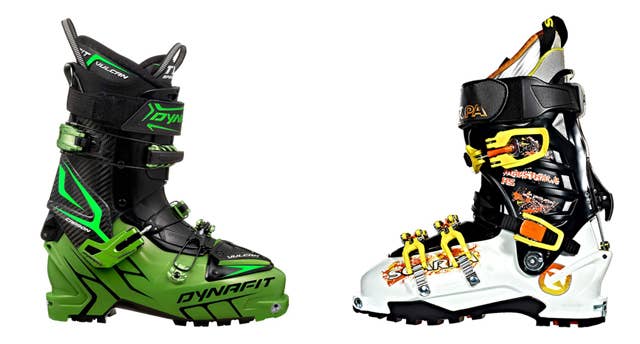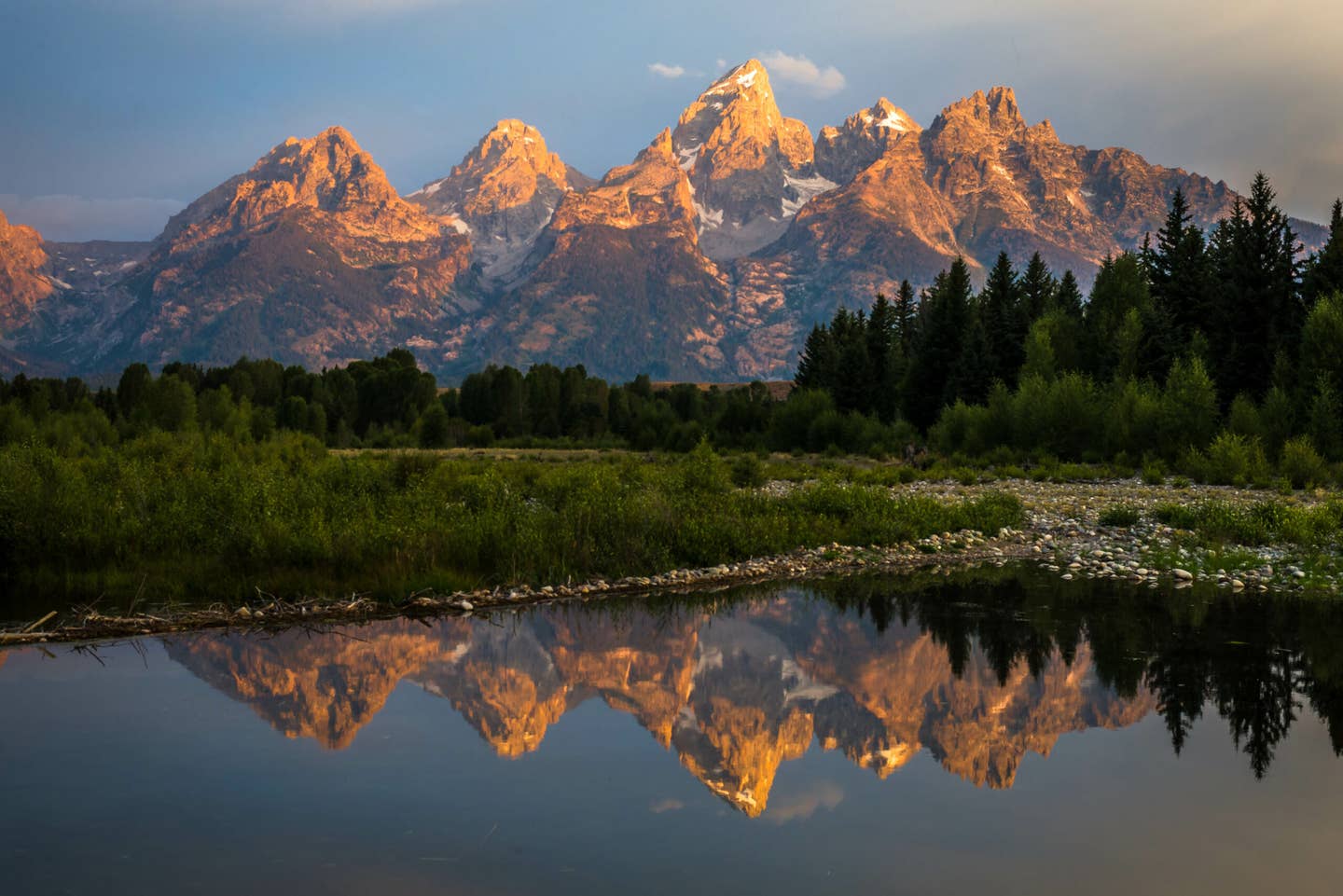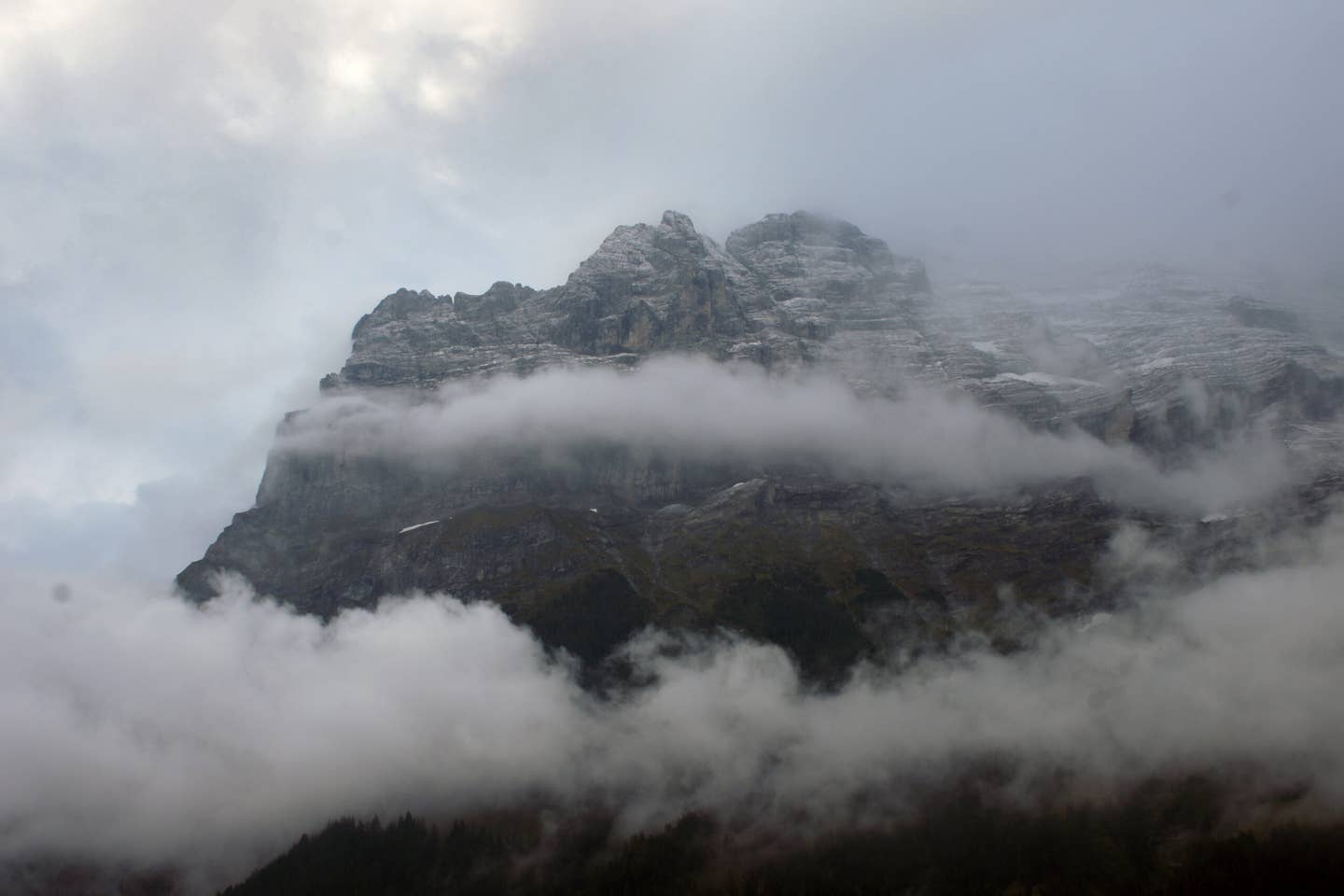

Vulcan vs. Maestrale RS Review
Popular Stories
Quick FYI: you can still get a free TGR t-shirt for any purchase of TGR merchandise or movies over $50 through Friday!
The Dynafit Vulcan and Scarpa Maestrale RS are this writer's picks for the best Alpine Touring boots as of the start of the 2013- 14 ski season. Both boots are good on both the downhill and uphill yet relatively light. They've both proven to be relatively durable. They both can be used in tech and frame bindings. Their only (shared) downside is that neither have a replaceable sole so they're not ideal for sled decks or for lots of scree scrambling. Together, both boots turned the AT boot universe upside down and set the bar for boot designers very very high.
Lee Lau and friends putting our two candidate boots to the test in Duffey Lake, British Columbia last winter.
If money is no object, the Dynafit Vulcan would have been the single boot to rule-them-all. In the real world, where budgets are a consideration, the Scarpa Maestrale RS is the boot of choice; packing the most performance for your boot dollar. Here's more on these two boots and why they're both so good.
Dynafit Vulcan
The Dynafit Vulcan is a cross-category boot. It's so light yet performs so well downhill that its both a freeride touring and all-round alpine touring boot, if you remember the touring boot categories we split up the other week. Key standout for this boot is that it is light, tours insanely well yet is the stiffest alpine touring boot currently in production. How light? 1590 grams with the stock liner, 1530 grams with an Intuition liner and just 1460 grams if, like many others, you tour pow on it without the tongue. It's exemplary touring performance comes from its remarkable stride (60 degree range of motion) that's even more so apparent without the tongue when one can get a long stride that eats up flat or mellow grade tours.
On the downhill the Vulcan feels smooth and progressive without the tongue. With the tongue, it feels more supportive fore/aft and stiff laterally but the feel of the boot is somewhat lacking; more like hitting a brick wall when flexing the boot as opposed to smoothness of power transmission. That being said, it's a boot which rewards commitment. Ski the Vulcan aggressively and you'll get the feedback you want. Lollygag and in my opinion, you'll feel the boot snap you around, whether you're a light or big skier.

Lee Lau with happy feet in the new Dynafit Vulcan boots, which are a pow slasher's dream.
There are some downsides, the biggest which is price. At $ 1000, the Vulcan is not cheap. After some 40 days my Vulcans aren't showing too much wear but those who've used the Vulcan and Mercury on sleds or scree scrambling report sole abrasion. Note that the thin sole rubber at the toe tech fittings also mean that cobblers will not be able to resole the boot.
A rather more minor downside is the learning curve in using the boot which initially presents a spiderweb of cables and interlocking plastic tongues. Gorilla skiers amongst us have reported breaking the top buckle by trying to force the buckle closed when the black plastic flaps on the front of the Vulcan catch. I'd advise to not be a gorilla, to remember that this is a light TOURING boot and to lean forward to take in some pressure before levering the top buckle closed to go to ski mode.
Scarpa Maestrale RS
The Scarpa Maestrale RS is Scarpa's flagship All-Round touring boot. At 1570 grams the Maestrale RS is also fairly light and skis well. More importantly it combined very good touring and downhill performance - and an OE Intuition liner at a relatively affordable and durable $700 pricepoint.
The blindingly ugly Maestrale RS has exceptional lateral stability rewarding aggressive skiers using modern technique. Scarpa managed to stiffen the Maestrale RS boot as compared to Maestrale by using different plastics and providing a stiffer tongue. This added stiffness did not compromise touring performance. The Maestrale RS still manages to package 40 degrees of free floating cuff. The combination of relative light weight and range of motion puts the Maestrale RS among the top tier of alpine touring boots.

Lee Lau finding that the light weight of the Maestrale RS - 1570 grams - makes vertical bootpacks a bit more sufferable.
The Maestrale RS was so good there wasn't much to find fault. It is possible for exceptionally aggressive skiers to force the rear boot cuff so far forward that the black plastic would jut over the white lowers thus locking the boot forward; this is a warranty issue. Some skiers also had issues with the Maestrale RS walk mechanism not engaging; another warranty issue.
The Bottom Line
The Dynafit Vulcan retails for $999.95. The Scarpa Maestrale RS retails for $698.95, and is even available on Backcountry.com for $559.16 right now. Bear in mind that I'm an Intuition liners fanboy but many will opt to replace the Dynafit liner with an Intuition which then adds another $ 180 or so to the price of the Vulcan (the Scarpa boot already has an Intuition liner inside).
Sign Up For Our Newsletter
It seemed that for a decade or so alpine touring boots were stuck in a time warp. It's possible to argue that Scarpa shook the scene up with the introduction of the Maestrale in the 2010-11 model year. Scarpa then outdid itself with the stiffer, better performing Maestrale RS in the same model year that Dynafit introduced the Vulcan. These two boots were so far ahead of the competition - the Vulcan from a pure performance standpoint; the Maestrale RS from performance for the buck standpoint - that everyone had to play catch up. This is why, time and time again, these boots should enter the conversation when someone asks "What touring boots should I get?"
Check out the Dynafit Vulcan here: http://goo.gl/UeooMO
Check out the Scarpa Maestrale RS here: http://goo.gl/W2auaD
Looking for other kinds of gear advice from TGR? Check out some our other gear pieces here:



